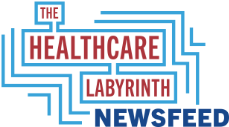Mergers and Acquisitions Down
Due to the major healthcare reductions in the budget reconciliation bill, mergers and acquisitions between hospitals and health systems were down in Q2 2025 against recent years. Eight transactions were announced in the second quarter, the lowest in the quarter since at least 2017.
Another report says that employers need to brace for continuing increases in healthcare costs. This is in part due to underlying utilization trends but also the probable price hikes providers will demand due to the losses in other lines of business under the reconciliation bill as well as the threat of tariffs. Hospital uncompensated care costs are expected to grow by $443 billion over ten years.
Additional article: https://www.healthcaredive.com/news/hospital-health-system-ma-falls-q2-medicaid-cuts-2025/752685/
#employercoverage #manda #mergers #acquisitions
Record Data Breaches In 2024
A record-high number of organizations reported healthcare data breaches in 2024. This year will be challenging as well. The Department of Health and Human Services’ Office for Civil Rights has listed 378 breaches affecting 500 or more individuals in the first six months of 2025.
(Article may require a subscription.)
#cybersecurity #healthcare
Walgreens Goes Private
Financially beleaguered Walgreens Boots Alliance shareholders approved the sale of the company to private equity firm Sycamore Partners for $10 billion. This takes the company private.
Additional articles: https://www.modernhealthcare.com/mergers-acquisitions/mh-walgreens-sycamore-partners-buyout-shareholders/
(Some articles may require a subscription.)
#walgreens
https://www.fiercehealthcare.com/retail/sycamore-partners-take-walgreens-private-deal-valued-10b
Best Budget Reconciliation Trackers
I wanted to report on the two best sources to understand what is in the big beautiful bill that has now passed. I recommend healthcare policy group KFF’s analysis as well as this Health Affairs Forefront Blog article that goes into great detail on major provisions.
Of course, my analysis is here: https://www.healthcarelabyrinth.com/saga-over-big-beautiful-bill-has-passed-for-good-or-bad/
Additional article: https://www.kff.org/tracking-the-medicaid-provisions-in-the-2025-budget-bill/
(Some articles may require a subscription.)
#budgetreconciliation #healthcare #medicaid #aca #obamacare #exchanges #medicare
Medicare Physician Rates Explained
Health Affairs Forefront had a three-part blog series on how to modernize Medicare physician pay rates. Doctors are the perennial ugly stepchildren when it comes to rate setting in Medicare, seeing their real reimbursement dropping considerably over the years. The three-blog series is very technical but gets into the weeds of what is wrong and how the formula could be improved or even abandoned in favor of something smarter.
Lawmakers have not acted to fix it because of the sheer costs. This is a pity because the lack of reform over the years has led to physicians abandoning private practice in favor of being employees of hospitals, private equity firms, and health plans. This has eroded primary care in our nation. A case can be made that more is being spent now because hospitals direct their owned physicians to change practice patterns and furnish care at more expensive hospital settings.
Here is my blog on the doc fix from some time ago – still very true: https://www.healthcarelabyrinth.com/docs-need-rate-relief-in-medicare-program/
Additional articles: https://www.healthaffairs.org/content/forefront/modernizing-medicare-physician-fee-schedule-part-2-medicare-economic-index-updates and https://www.healthaffairs.org/content/forefront/modernizing-medicare-physician-fee-schedule-part-3-adding-lookback-budget-neutrality
(Articles may require a subscription.)
#medicare #physicians #primarycare
New York May Tackle Site Neutral Payments Because Congress Won’t
I certainly applaud New York for looking at tackling site neutral payments because Congress won’t. A bill in New York would make it the first state to advance site-neutral payment in commercial coverage. This would generate as much as $1.15 billion in savings for insurers and employers and as much as $213 million for commercial insurance enrollees. The bill would cap the amount providers could charge, and insurers could pay, at 150 percent of the Medicare rate for several kinds of services. The proposal would reach all plans, including ERISA self-insured and public insurance plans, that are offered in the state. Interesting that it will apply to ERISA self-insured plans as you would think federal law would preempt state law here. It would be challenged but could pass muster in courts I guess.
The federal government implemented some very small reforms in 2015 and 2019, impacting just 1% of outpatient facility spending in Medicare. Hundreds of billions could be saved in Medicare and commercial (because rates are tied to Medicare). Congressional Medicare policy arm MedPAC wants site neutrality to apply to over 2,000 services.
My site neutral blogs explaining all of this are here: https://www.healthcarelabyrinth.com/the-truth-about-hospital-costs-and-payments/ and https://www.healthcarelabyrinth.com/it-is-time-for-site-neutral-payments-in-our-healthcare-system/
(Article may require a subscription.)
#newyork #siteneutral #hospitals #medicare #commercial #employercoverage
KFF Researchers Outline Medicare at 60
Healthcare policy group KFF researchers published a lengthy analysis in the Journal of Health Politics, Policy and Law. The article covers the growth of Medicare Advantage (MA), the pros and cons of MA for beneficiaries, the smaller role of the traditional program and the risks there, the impact of high cost-sharing on traditional program enrollees, the possibility of adding supplemental benefits to cover gaps, the lack of acute long-term care as a benefit, and Medicare program sustainability issues.
I did object to the researchers taking other research at face value in terms of MA overpayments. They touted the usual figures from opponents — private insurers are paid $83 billion more annually or 22%. They singled out the additive funding for Star and higher payment rates compared with the traditional program in certain counties. The 22% number has some dubious assumptions and of course Congress made a deliberate policy decision to make Star bonuses additive and add dollars to expand MA into underserved counties.
#medicare #medicareadvantage
— Marc S. Ryan





